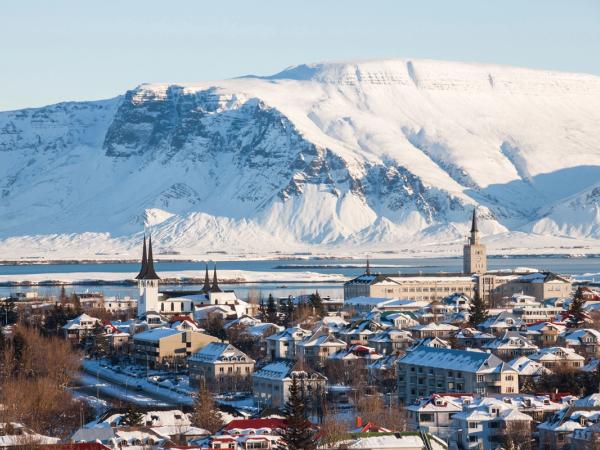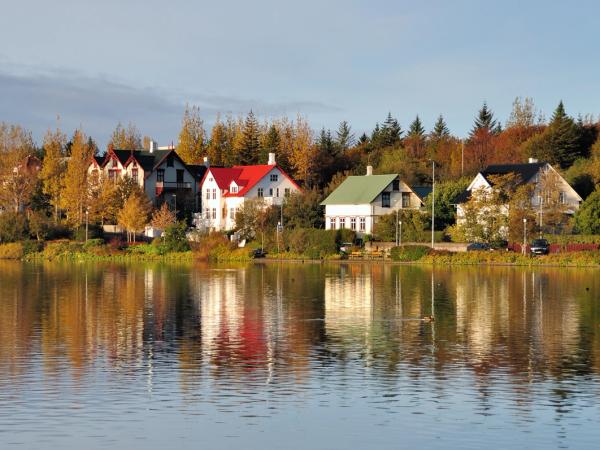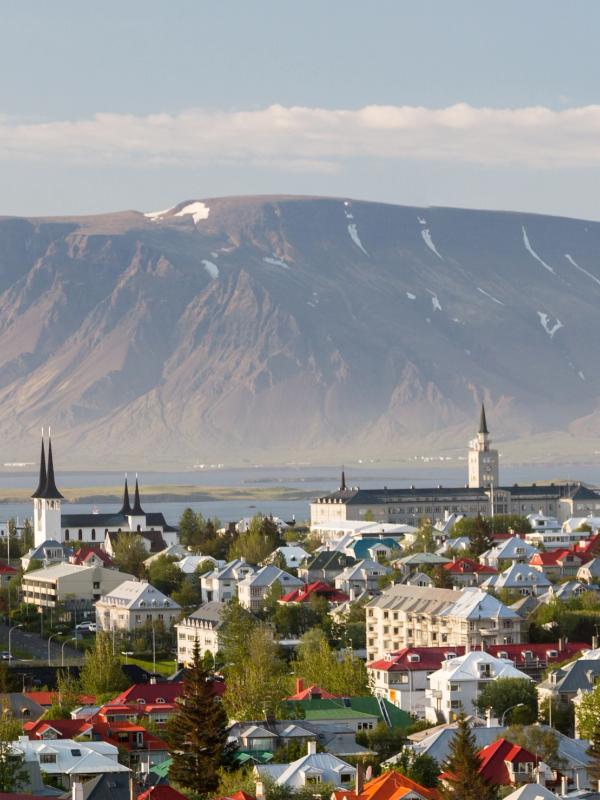
Where is Reykjavik? Locating Iceland's Capital in the Map
You're planning a trip to one of the world's most unique capitals, but you're not quite sure where exactly it sits on the map. Is Reykjavik really that far north? How easy is it to actually get there? And what does its location mean for your visit?
Reykjavik is the northernmost capital of any country. That puts it in its own league among world capitals. Its northern location is actually easier to reach from North America and Europe than you might think. Plus, its position gives it some perks you won't find anywhere else.
Here's everything you need to know about where Reykjavik is and how to get there.
Reykjavik on the World Map
Reykjavik sits at about 64°08'45"N latitude and 21°56'33"W longitude. It's the northernmost capital of any independent country in the world. While Nuuk, Greenland, sits a bit further north at 64°10'N, Greenland isn't a country – it's part of Denmark.
This northern spot puts Reykjavik in the North Atlantic Ocean. It's like a bridge between North America and Europe. That's why Iceland became such a popular stopover destination for flights across the Atlantic.
How Reykjavik Compares to Other Major Cities
Here's how Reykjavik compares to other big cities:
Cities Much Further South:
- New York City: 40°42'N (about 23 degrees south of Reykjavik)
- London: 51°30'N (about 12 degrees south)
- Moscow: 55°45'N (about 8 degrees south)
- Oslo: 59°54'N (about 4 degrees south)
Cities at Similar Latitudes:
- Fairbanks, Alaska: 64°50'N (just 0.7 degrees north of Reykjavik)
- Whitehorse, Yukon: 64°37'N (about 0.5 degrees north)
Cities Even Further North:
- Tromsø, Norway: 69°39'N (about 5 degrees north)
- Murmansk, Russia: 68°58'N (about 4 degrees north)
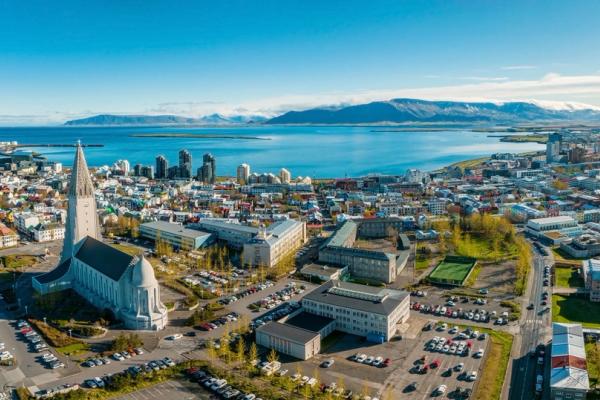
What This Northern Location Means
Being this far north gives Reykjavik some different traits. The city gets big seasonal light changes. Long summer days where the sun barely sets. Then short winter days with just a few hours of daylight.
The Gulf Stream keeps temperatures milder than you'd expect for such a northern spot.
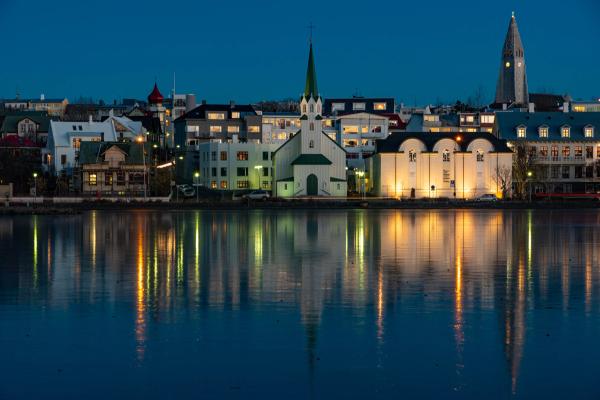
Reykjavik's Location in Iceland
Reykjavik sits in southwestern Iceland on the Seltjarnarnes peninsula. It's positioned at the southeastern corner of Faxaflói Bay. This bay has been important for the city's development as a maritime hub.
The city isn't just Reykjavik proper – it's part of what locals call the Capital Region. Suburbs spread south and east. This entire area is home to over 200,000 people (64% of the country’s total population). That makes it Iceland's center for culture, economics, and government.
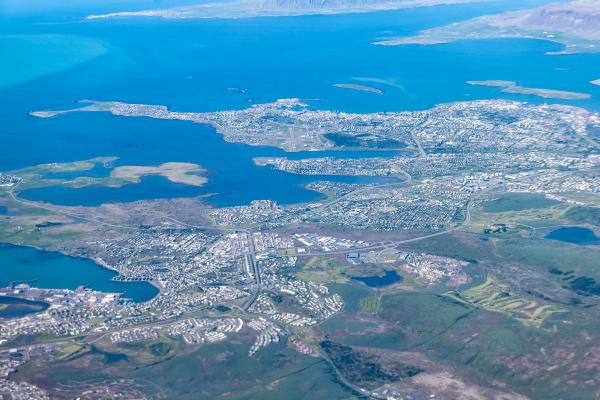
Key Landmarks and Features
When you're in Reykjavik, you'll notice several geographical features:
- Elliðaá River: The biggest river running through the city
- Mount Esja: A 914-meter (2,999-foot) mountain to the north. It's popular for hiking and offers good city views.
- Faxaflói Bay: The bay that gives Reykjavik its natural harbor
- Various peninsulas, coves, and small islands that create diverse coastal scenery
This location has been clever since the 9th century. That's when the first settlers figured out the bay's potential as a safe harbor for trade and fishing.
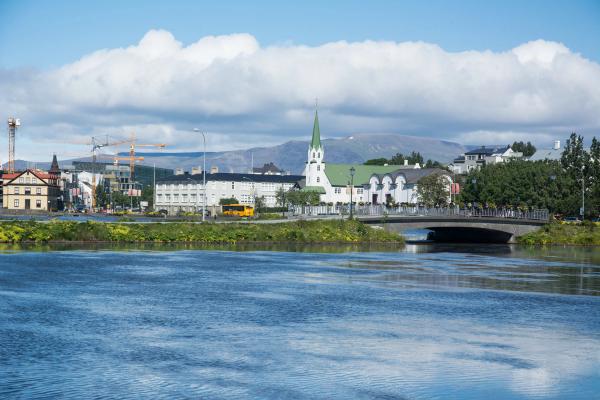
Why Location Matters for Your Visit
Reykjavik's location up north isn't just a fun fact – it directly affects your trip experience.
Daylight Hours: What to Expect
Reykjavik's northern latitude results in significant seasonal changes in daylight. In summer (around the solstice in June), you'll get nearly 19 hours of daylight. The sun sets around 11:30 PM and rises again at 3:00 AM. In winter, you might only see 4-5 hours of daylight.
Those long summer days mean more time for sightseeing. The dark winters are ideal for viewing the Northern Lights.
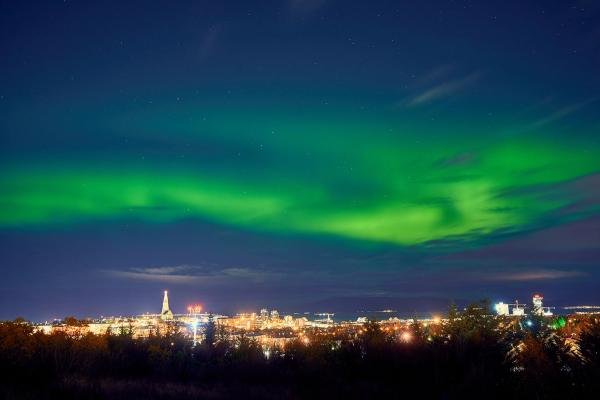
Climate Considerations
Thanks to the Gulf Stream, Reykjavik's weather is milder than other cities at similar latitudes. Winter temperatures rarely drop below -10°C (14°F). Summers typically stay between 10-15°C (50-59°F).
What to Pack:
- Layers are key year-round
- Waterproof jacket regardless of season
- Warm clothes even in summer for evening activities
Best Times to Visit Based on Location
Reykjavik's northern location creates three distinct travel seasons, each with its own perks.
- Summer (June-August): Long days, warmest weather, but also the most crowded and expensive.
- Spring/Fall (April-May, September-October): Milder weather, fewer crowds, still decent daylight hours.
- Winter (November-March): Northern lights season, fewer tourists, dramatic landscapes, but limited daylight.
Getting to Reykjavik: Your Flight Options
Contrary to what you would expect, Reykjavik’s is not the biggest airport in Iceland. To get to Reykjavik, you’ll have to fly to the Keflavík International Airport (KEF), which is about 50 kilometers (31 miles) from the city center. Your best bet to get to the city center is renting a car, but there's also a reliable Flybus service and taxis that make the 45-minute journey.
KEF is Iceland's main international hub. It's well-connected considering Iceland's small size. The airport offers modern facilities, accessibility services, and smooth connections if you're using Iceland as a stopover point.
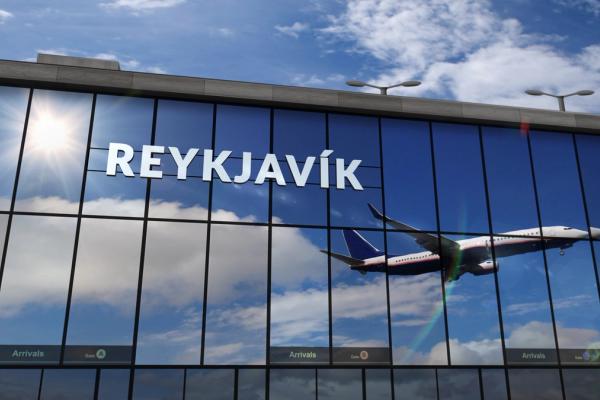
From the United States
The U.S. has good connectivity to Reykjavik. There are direct flights from 13 different cities, with Boston and Washington, D.C., being the most affordable options to fly from.
Cities:
- Washington D.C., DC
- Boston, MA
- Nueva York, NY
- Detroit, MI
- Minneapolis, MN
- Seattle, WA
- Portland, OR
- Chicago, IL
- Denver, CO
- Durham, NC
- Pittsburgh, PA
- Nashville, TN
- Orlando, Florida, FL
Useful tip: Icelandair offers a stopover program. You can stay in Iceland for up to 7 days without paying extra airfare. Good if you want to explore before continuing to Europe.
From Canada
Canada has solid connections to Reykjavik, although some routes are only available during summer.
Direct flights during summer:
- Calgary
- Toronto
- Montreal
- Halifax
- Vancouver
Direct flights available in October:
- Calgary
- Toronto
- Vancouver
- Montreal
Direct flights from November to April:
- Toronto
- Vancouver
Direct Flight in May:
- Toronto
- Calgary
From the United Kingdom
The UK probably has the best connectivity to Reykjavik. Direct flights are seasonal (funny enough, you have fewer options during the high season).
Direct flights during summer (June, July & August)
- Glasgow
- London
- Manchester
- Edinburgh
Direct flights in September:
- Glasgow
- London
- Manchester
- Edinburgh
- Liverpool
Direct flights in October:
- Glasgow
- London
- Manchester
- Edinburgh
- Liverpool
- Bristol
- Nottingham
- Newcastle upon Tyne
- Birmingham
Direct flights in November:
- Glasgow
- London
- Manchester
- Edinburgh
- Liverpool
- Bristol
- Leeds
- Newcastle upon Tyne
- Birmingham
- Bournemouth
Direct flights in December:
- Glasgow
- London
- Manchester
- Edinburgh
- Birmingham
- Bristol
- Leeds
- Belfast
Direct flights in January:
- Glasgow
- London
- Manchester
- Edinburgh
- Birmingham
- Bristol
Direct flights in February:
- Glasgow
- London
- Manchester
- Edinburgh
- Liverpool
- Bristol
- Nottingham
- Newcastle upon Tyne
- Birmingham
- Belfast
- Bournemouth
- Leeds
Direct flights in March
- Glasgow
- London
- Manchester
- Edinburgh
- Bristol
- Nottingham
- Newcastle upon Tyne
- Birmingham
Direct flight in April
- London
- Manchester
- Edinburgh
- Liverpool
- Bristol
- Nottingham
- Newcastle upon Tyne
- Birmingham
- Leeds
- Belfast
- Bournemouth
Direct flights in May:
- London
- Edinburgh
- Glasgow
- Manchester
Planning Your Reykjavik Adventure
Reykjavik's unique position at 64°08'N makes it unlike any other capital city you'll visit. Its northern latitude gives it character. From the Midnight Sun of summer to the aurora-filled winters. Its spot in the North Atlantic makes it easy to reach from both sides of the ocean.

